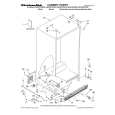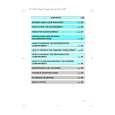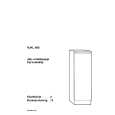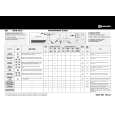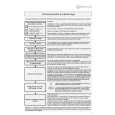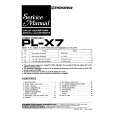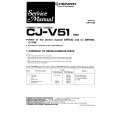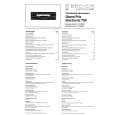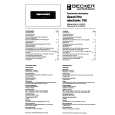|
|
|
Productos
|
|
Información
|
|
Destacado
|
|
|
 |
|
|
No hay comentarios de productos.
2. + B Power Supply for High Voltage Output The + B power supply for high voltage output consists of Q515, L501, D520, C535, C583 and other devices. This circuit uses the step-up chopper circuit in order to produce the + B power in which the DC. IN input voltage is stepped up by switching the transistor Q515. When Q515 is turned on, a current flows from drain to source of Q515 through L501. When Q515 is turned off, a counter electromotive force is generated across L501 that charges C535 and C583 through D520 and generates the +B voltage. Relationship between DC. IN and +B voltage is shown below. V (+B) = DC. IN + V (L501) It means that the output voltage can be changed in accordance with the amount of energy that is stored in L501. In the other words, the output voltage can be controlled by controlling the ON time of Q515. The +B power for the horizontal deflection system is controlled by the PWM IC IC502. The PWM control signal (HV +B PWM) is output from IC502 pin-13. The PWM control output signal is amplified by Q506, Q509 and Q510, then is sent to Q515 gate. 3. High Voltage Output Circuit The input drive signal to the high voltage output circuit is output from IC502 pin-23 and is sent to an input of the NAND gate IC505. The other input terminal of the NAND gate is the protector detection terminal (staying at the �L� level when the protector works) that cuts off the drive signal to the high voltage circuit when the protector works. The drive signal that is output from IC505 is sent to the HV OUT: Q520 gate through the inverter (Q511) and the drive circuit (Q513, Q514). The flyback pulse is generated at the Q520 drain by the resonance of T502 (FBT), T501, C539, C542 when Q520 is switched and is turned off by the HV. DRV pulse. As the CRT current increases and the high tension voltage decreases, the voltage at the high tension voltage detection pin pin-12 of FBT decreases so that Q515�s ON time is prolonged by IC502. As the result of the longer ON time, +B voltage increases, the Q520 drain pulse becomes larger and the high tension voltage increases. The high tension voltage is thus regulated. Q527 is the switch that selects the resonance capacitors. The switch Q527 is turned on and capacitance of the resonance capacitor is increased when 15 kHz signal is input by shorting C542. This shorting is performed in order to stabilize the high voltage circuit by widening the pulse width of the drain pulse. T502 is the flyback transformer that generates the high
BVM-D9H1U/D9H5U/D9H1E/D9H5E/D9H1A/D9H5A
tension voltage of the monitor, focus voltage, G2 voltage, heater voltage and high voltage protector detected output voltage. The circuit consisting of L504, C544 and R581 is the filter circuit in order to absorb the FBT damping. For your reference, the filter side of C545 that is T501 pin-2 receives the voltage that is equivalent to the + B voltage. The 120 V power voltage that is used for VIDEO OUT is generated by retracing and rectifying the voltage generated across the secondary winding of T501. 4. Protector Circuits The P board has the following protector circuits that hold down the horizontal deflection circuit and the high voltage output circuit when any of the protector circuit is activated. . HV Protector The HV protector is the circuit that holds down the high voltage when the high voltage (HV) that is applied to CRT exceeds the set value due to any abnormality or trouble. The output signal from pin-5 of FTB that is the tertiary winding of FBT, is retrace-rectified by D527 and C554 to generated the detected output voltage of the high voltage protector. The high voltage output thus detected, is adjusted of its signal level, buffered by IC511 and is sent to the negative (-) input terminal of the comparator IC509 pin-3. The positive (+) input terminal of the comparator is connected to the reference voltage of the high voltage protector that is generated by the shunt regulator IC507. When the detected high voltage goes higher than the reference voltage, the comparator works so that the protector output terminal is latched to the �L� level by Q507 and Q508. The operating point of the HV protector is HV = 18.2 kV. . Ik Protector The Ik protector is the circuit that holds down the high voltage when the current Ik that flows through the CRT exceeds the set value due to any abnormality or trouble. The current flowing through the ABL signal line is detected in the form of voltage by the resistors R1504 to R1506. The detected current Ik is sent to the positive (+) input terminal of the comparator IC509 pin-5. The negative (_) input terminal of the comparator is connected to the reference voltage of the Ik protector that is generated by the voltage-division with R583 and R584. When the detected Ik voltage goes lower than the reference voltage, the comparator works so that the protector output terminal is latched to the �L� level by the circuit of Q521 to Q523. C538 is inserted in order to 6-7
|
|
 |
> |
|
